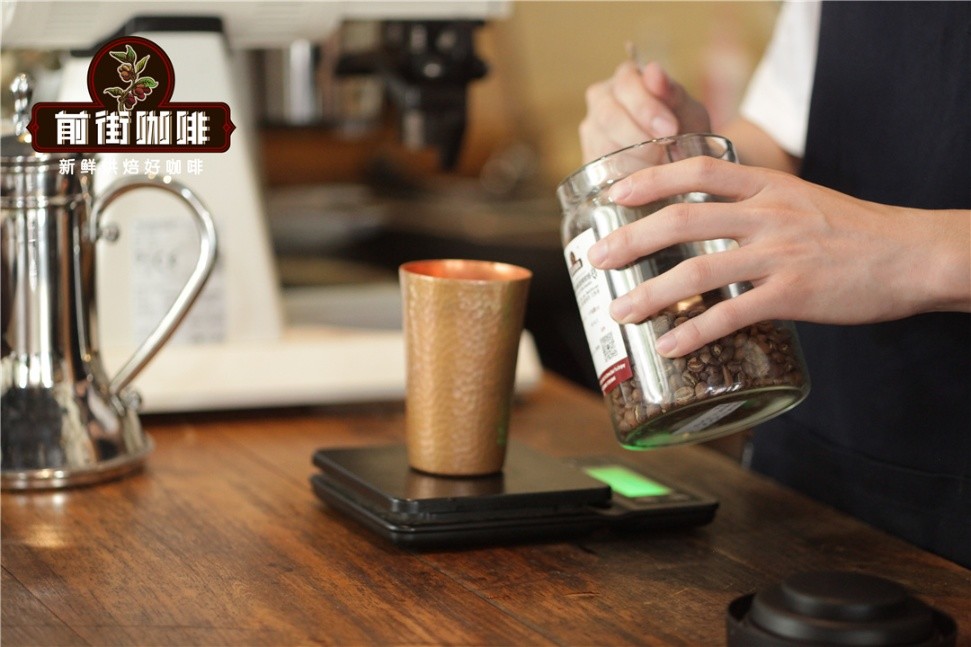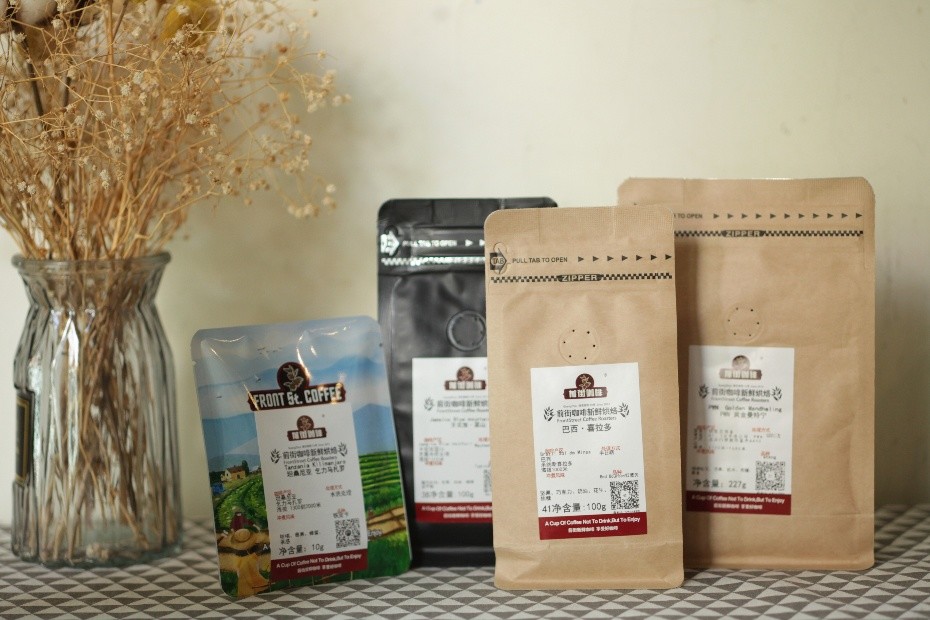What are the effects of water on the salty coffee that is important for coffee production? how to adjust the lack of coffee extraction?
The water used to make it.
Most of every kind of coffee, from classic dripping coffee to pouring coffee to espresso, is made from water. In fact, dripping coffee is the most common way to make coffee, containing about 98.5% of the water and 1.5% of the actual coffee beans.
Coffee is mainly water, which means that the taste and quality of the water used to make coffee have a great influence on its final taste. Therefore, if the coffee you drink is salty, the possible explanation is that the water used to make coffee is salty.
What makes tap water taste salty? A compound called sodium chloride (table salt) can be deposited in large quantities in your water pipes due to seawater intrusion or underground salt deposition.
If you live in a cold place, the salt used to remove ice from the road may even dissolve into surface water and filter into the water supply system.
If you use water softeners to purify water, sometimes they will malfunction and put too much sodium chloride into the faucet, thus making the water salty.
So if you find coffee salty, try the water you use and see if it is salty, too.
If the water you use to make coffee is not salty, I have two possible explanations.
First of all, the coffee beans contain a variety of inorganic salts, in the performance of the coffee beans themselves, the appropriate salty taste plays an important role in a good flavor jade taste balance. Of course, if he is too salty, then there is something wrong with the bean itself or during the baking process.

Insufficient extraction of coffee
The second most common reason why coffee tastes salty is that it is underextracted.
Whether you use a drip filter coffee machine, an espresso machine or an espresso machine, in addition to water quality, the extraction of coffee beans has the greatest impact on the flavor of a cup of coffee.
What is extraction? It is basically how much the flavor of the coffee beans is extracted or dissolved when the hot water comes into contact with the ground coffee beans and flows into the coffee pot or cup.
A perfectly extracted cup of coffee will extract enough flavor from the beans to make a cup of sweet, mature, acidic and smooth coffee.
If the coffee beans are over-extracted during brewing, the coffee will taste very bitter, dry and boring.
If the coffee beans are not extracted enough, the coffee will taste sour, thin, water and salty.
You can simulate underextracted coffee by brewing the pot as usual and filling the glass with only the coffee that comes out of the first minute. You can simulate an overextracted cup of coffee by collecting only all the coffee that comes out of the coffee machine at the last minute.
If you find that coffee is not only salty, but also sour and watery, it may be due to the lack of coffee extraction.
So, what factors will cause the coffee to be underextracted and salty? What can you do to repair them?
How to repair underextracted coffee

Because the drip coffee machine is the most common type of coffee machine, this is the coffee making method I will quote when talking about how to repair underextracted coffee.
However, even if you use a coffee maker or French filter press to make coffee, the method of avoiding insufficient extraction still applies.
Therefore, if you use an ordinary trickle coffee machine and find that your coffee is salty, sour and underextracted, there are three possible explanations.
1. Your beans are too rough.
The finer the ground coffee beans, the larger the surface area of the coffee that the hot water touches when brewing. The more coffee beans are exposed to water, the more flavor will be extracted from them.
So if you've been making underextracted coffee, the first adjustment I'm going to make is to grind your coffee beans finer. This not only makes the coffee beans press more tightly in the filter paper, making it take longer for the water to penetrate and give it more time to extract flavor, but it also increases the surface area of the coffee beans and produces more extraction in this way.
two。 You didn't use enough water.
As I said before, if you want to simulate the taste of an underextracted cup of coffee, let the coffee flow into a separate cup in the first minute. This is because in the first minute of brewing, only a small number of coffee beans have time to be dissolved and absorbed by water.
If you don't use enough water in your coffee maker, you'll almost do the same thing. Your coffee machine ran out of water a long time ago, so in the later stages of brewing, when most of the coffee beans are extracted, it does not have any water available. Lead to insufficient extraction of coffee and salty taste.
The general rule for dripping coffee is the ratio of coffee to water with 2:1 tablespoons. Therefore, for every cup of coffee you want to make, you should use 2 tablespoons of ground coffee beans. This means that a whole pot of 12 cups of coffee requires about 24 tablespoons.
3. The coffee machine malfunctioned.
The third and last thing that may cause your coffee to underextract and become salty is not your fault, but the failure of the coffee machine.
If your coffee maker is old, damaged, or incorrectly set, and the water is not heated enough or brewed long enough, you may make coffee with insufficient extraction.
Water that is not hot enough will not dissolve enough essential oil from the coffee grounds as it passes through the coffee grounds. When more coffee beans are extracted and the coffee reaches its best flavor, winemakers who have not brewed long enough will not be able to enter the later stages of the process.
Therefore, if you try to grind the coffee beans finer and use more water, but still find the coffee salty, this may be because some parts inside the coffee machine are not working properly.
Important Notice :
前街咖啡 FrontStreet Coffee has moved to new addredd:
FrontStreet Coffee Address: 315,Donghua East Road,GuangZhou
Tel:020 38364473
- Prev

The difference between American Australian Black Coffee how did longblack Coffee come from what kind of coffee is shortblack?
The main difference between short black, long black and American coffee is the water consumption of each type and the grease formed at the top: short black is a simple espresso that does not add extra water to the drink except for the water needed to extract the coffee. Because it is not diluted, a cup of espresso has very strong fat and tastes good.
- Next

How long can the method of making cold-extracted coffee be preserved? why is cold-extracted coffee better and healthier?
You are probably already in love with cold coffee, and if so, you may consider trying to make iced coffee at home. Now there is so much information about cold-extracted coffee formula on the Internet, which confuses a lot of coffee rookies and has a lot of misunderstandings about cold-extracted coffee. If you want to unveil the cold coffee today, you should take a closer look at the following introduction. Qianjie will show you
Related
- Detailed explanation of Jadeite planting Land in Panamanian Jadeite Manor introduction to the grading system of Jadeite competitive bidding, Red bid, Green bid and Rose Summer
- Story of Coffee planting in Brenka region of Costa Rica Stonehenge Manor anaerobic heavy honey treatment of flavor mouth
- What's on the barrel of Blue Mountain Coffee beans?
- Can American coffee also pull flowers? How to use hot American style to pull out a good-looking pattern?
- Can you make a cold extract with coffee beans? What is the right proportion for cold-extracted coffee formula?
- Indonesian PWN Gold Mandrine Coffee Origin Features Flavor How to Chong? Mandolin coffee is American.
- A brief introduction to the flavor characteristics of Brazilian yellow bourbon coffee beans
- What is the effect of different water quality on the flavor of cold-extracted coffee? What kind of water is best for brewing coffee?
- Why do you think of Rose Summer whenever you mention Panamanian coffee?
- Introduction to the characteristics of authentic blue mountain coffee bean producing areas? What is the CIB Coffee Authority in Jamaica?

